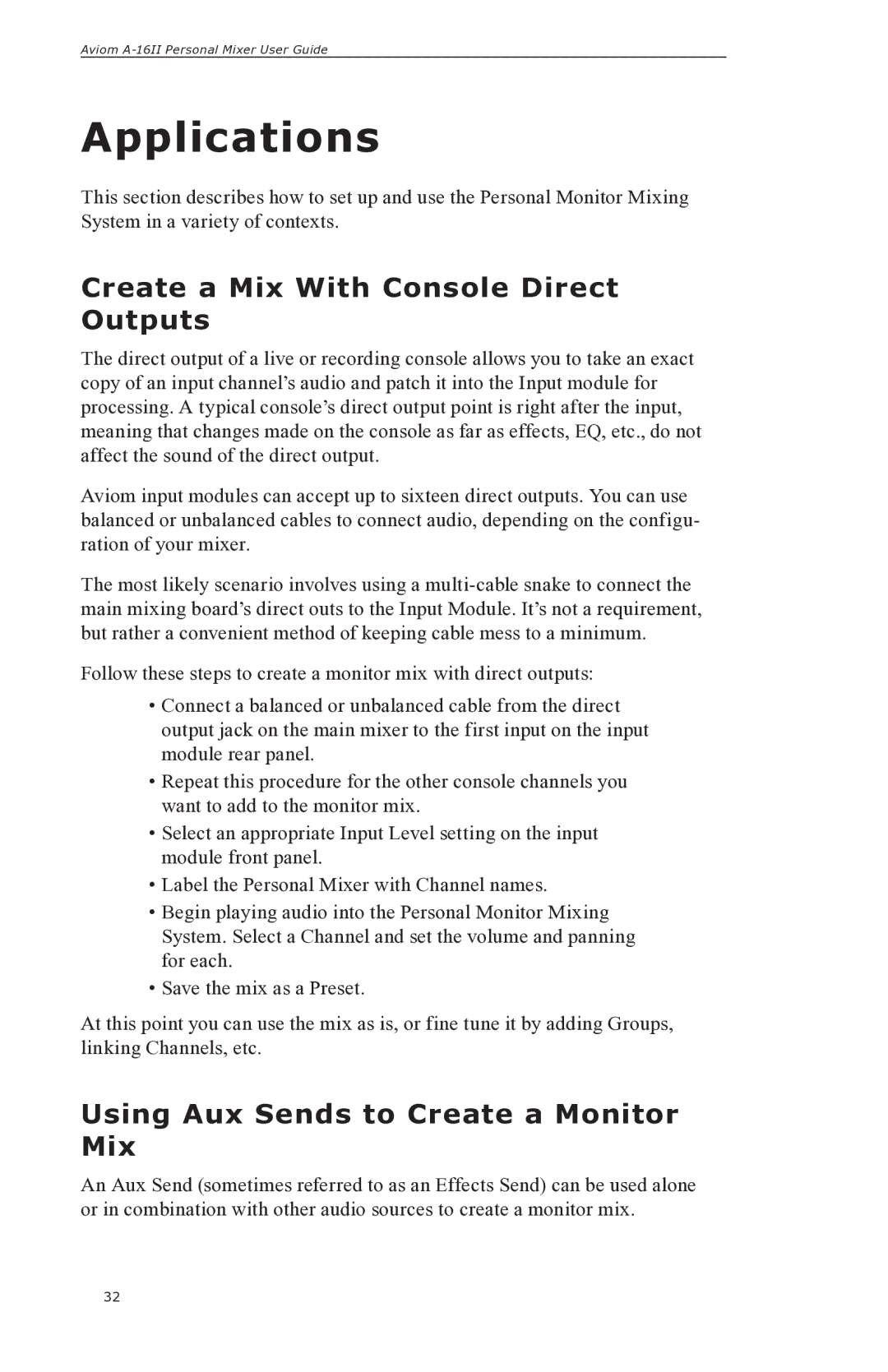Aviom
Applications
This section describes how to set up and use the Personal Monitor Mixing System in a variety of contexts.
Create a Mix With Console Direct Outputs
The direct output of a live or recording console allows you to take an exact copy of an input channel’s audio and patch it into the Input module for processing. A typical console’s direct output point is right after the input, meaning that changes made on the console as far as effects, EQ, etc., do not affect the sound of the direct output.
Aviom input modules can accept up to sixteen direct outputs. You can use balanced or unbalanced cables to connect audio, depending on the configu- ration of your mixer.
The most likely scenario involves using a
Follow these steps to create a monitor mix with direct outputs:
•Connect a balanced or unbalanced cable from the direct output jack on the main mixer to the first input on the input module rear panel.
•Repeat this procedure for the other console channels you want to add to the monitor mix.
•Select an appropriate Input Level setting on the input module front panel.
•Label the Personal Mixer with Channel names.
•Begin playing audio into the Personal Monitor Mixing System. Select a Channel and set the volume and panning for each.
•Save the mix as a Preset.
At this point you can use the mix as is, or fine tune it by adding Groups, linking Channels, etc.
Using Aux Sends to Create a Monitor Mix
An Aux Send (sometimes referred to as an Effects Send) can be used alone or in combination with other audio sources to create a monitor mix.
32
